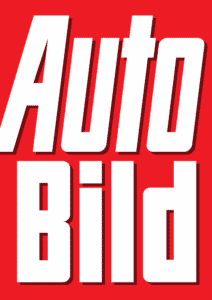Want to understand the role of the camshaft and the importance of the camshaft position sensor in your car? Check out our blog article in order to learn anything you need to know.

What does a camshaft do?
Without a camshaft, the 4 stroke internal combustion engine in a vehicle cannot work, regardless of whether it is a diesel or gasoline engine. If you want to read more about the technical background of the 4 stroke engine, you will find more information below.
GAIN MORE CONTROL OF YOUR CAR WITH THE CARLY FEATURES
Check the exact pricing of Carly for your car brand!

Fast International Shipping with DHL

14 days adaptor return policy

Excellent customer support

Lifetime warranty in the hardware
SEEN IN







The camshaft is essential for the operation because this component is responsible for opening and closing the intake and exhaust valves in the engine or cylinder head.
To control the intake and exhaust valves, the camshaft is fitted with so-called “cams”, depending on how many valves are installed in the engine and how many cams are also installed on the camshaft.
The task of the cams is to convert the rotary motion of the camshaft into a lifting motion in order to be able to press on the exhaust valves and intake valves.
If the cam presses down on the exhaust valve or intake valve via a hydraulic tappet or cup tappet, the valve is opened. If the cam no longer presses on the hydraulic tappet or cup tappet, the valve is pushed up again by the valve spring.
This component is driven by the crankshaft. The crankshaft and camshaft are connected by a timing belt or a timing chain. In most modern engines, timing chains are usually used because, unlike timing belts, they are maintenance-free and therefore do not need to be replaced.
Unfortunately, it turns out again and again that in many engines the timing chain must be replaced after 100,000 miles because the timing chain is worn. In addition, the cost of changing the timing chain is in most cases higher than for the timing belt.
Modern four-cylinder in-line engines normally have two camshafts; boxers or V-engines can have up to four.
What is a 4 stroke engine?
In order for a modern gasoline or diesel “four-stroke” engine to function, four movements of the piston are necessary. These movements are also called “strokes”.
These 4 strokes are:
1. Intake:
At the beginning of the first stroke, the piston is at the “top dead center”. The exhaust valve is closed and the intake valve is opened, this happens via the camshaft. The piston moves in the direction of the crankshaft, which means that the piston moves downward. During this process, the air-fuel mixture is sucked in. In modern engines with direct injection, only air is drawn in. As soon as the piston reaches the bottom dead center, the intake valve is closed. This completes the first cycle.
2. Compression
In the second stroke, the piston moves again in the direction of the valves/camshaft to the “top dead center”. During this process, the air-fuel mixture is compressed. In a gasoline engine, the mixture is heated to about 450 degrees during this process, and to about 650 degrees in diesel engines. Just before the piston reaches the “top dead center”, the gasoline engine ignites and the diesel engine injects.
3. Combustion
Once the “top dead center” has been reached, the air/fuel mixture should be completely ignited. The explosion taking place in the cylinder now pushes the piston back down towards the “bottom dead center”. Now the exhaust valve is opened again by the camshaft.
4. Exhaust
When the piston has reached the bottom dead center, it is pushed up again. With the help of the upward movement, the exhaust gas produced by the combustion is pressed via the exhaust valve into the exhaust manifold. Shortly before the 4th stroke is completed, the so-called “valve overlap” occurs, which means that the intake valve opens shortly before the piston has reached the “top dead center”. The exhaust valve closes shortly after “top dead center”.
Different designs of the camshaft:
There are various designs as well as different materials and production processes.
The most commonly used type is the cast or hollow cast camshaft. This consists in most cases of cast iron
Forged steel camshafts are also used in high-performance engines.
A relatively new type is a so-called “tubular steel camshaft”, which is also known as a “built” camshaft. The big advantage here is the weight saving because here 20-40% of weight can be saved compared to the above mentioned.
What kind of damage can occur to the camshaft?
- Scoring on the bearing shells/Bearing shells worn out
- Camshaft running surface damaged
- Material removal at the cam lobes
Camshafts are generally not wearing parts, but damage can still occur.
Common causes of defective are inadequate oil supply or overloading of the engine over a longer period of time.

Diagnosis and repair of faults on the camshaft
If you suspect any issue, we recommend running a diagnosis using an OBD2 adapter, first. This will read your error memory from your ECUs. In many cases you can find out when an error (DTC) has been detected and what specifically the error is. Keep in mind that a camshaft is a mechanical component. This means there a limits of diagnosing issues with your camshaft, but related issues still can.
OBD adapters and diagnostic equipment can be used to diagnose a variety of engine problems, regardless of make or model. The issues found vary between simple sensor defects and more complex problems, such as turbocharger defects. In some specific cases, an OBD adapter can help fixing an issue. Sometimes just clearing old trouble codes (DTCs) will help, saving you a trip to the repair shop.
Whether you like fixing stuff yourself or you are a professional, a diagnostic device is a valuable tool that every driver should have in his car.
Bad camshaft position sensor symptoms
A malfunctioning sensor can cause a number of issues in a vehicle, including:
- Engine misfires
- Engine stalling or hesitation
- Engine rough idling
- Poor acceleration
- Decreased fuel efficiency
- Check Engine Light illumination
- Engine failure to start or start and stall
It’s important to note that these symptoms can be caused by other issues as well.
Camshaft position sensor location
The camshaft position sensor is typically located near the camshaft or valve cover on the engine. Its exact location may vary depending on the make and model of the vehicle. In some cases, it may be located on the side of the engine block or cylinder head, or near the crankshaft position sensor.
How to reset camshaft position sensor?
The process for resetting this sensor can vary depending on the make and model of the vehicle, but generally, it involves the following steps:
- Locate the sensor. This sensor is typically located near the top of the engine, on or near the cylinder head. It may be mounted on the front or rear of the engine.
- Disconnect the sensor’s electrical connector. This is typically a small, plastic connector that is attached to the sensor.
- Clean the sensor and the connector. Use a clean cloth or brush to remove any dirt or debris from the sensor and the connector.
- Reconnect the sensor’s electrical connector. Make sure it is securely connected.
- Perform a scan of the vehicle’s engine control module (ECM) with a diagnostic scanner. This will clear any codes or error messages related to the position sensor.
- Start the engine and check for any warning lights or error messages related to the camshaft position sensor. If none appear, then the sensor has been reset.
Please be aware that if this sensor is faulty, it may need to be replaced. Also, it is important to check the vehicle’s repair manual for the specific instructions for your vehicle, as the above steps may vary depending on the make and model of your car.
What to do after replacing camshaft sensor?
After replacing the sensor, it is important to clear any diagnostic trouble codes (DTCs) that may have been stored in the engine control module. This can typically be done using a diagnostic tool, such as an OBD-II scanner. It is also a good idea to test drive the vehicle to ensure that the sensor is functioning properly and that the engine is running smoothly. If any issues persist, it may be necessary to further diagnose the problem and make any necessary repairs.

